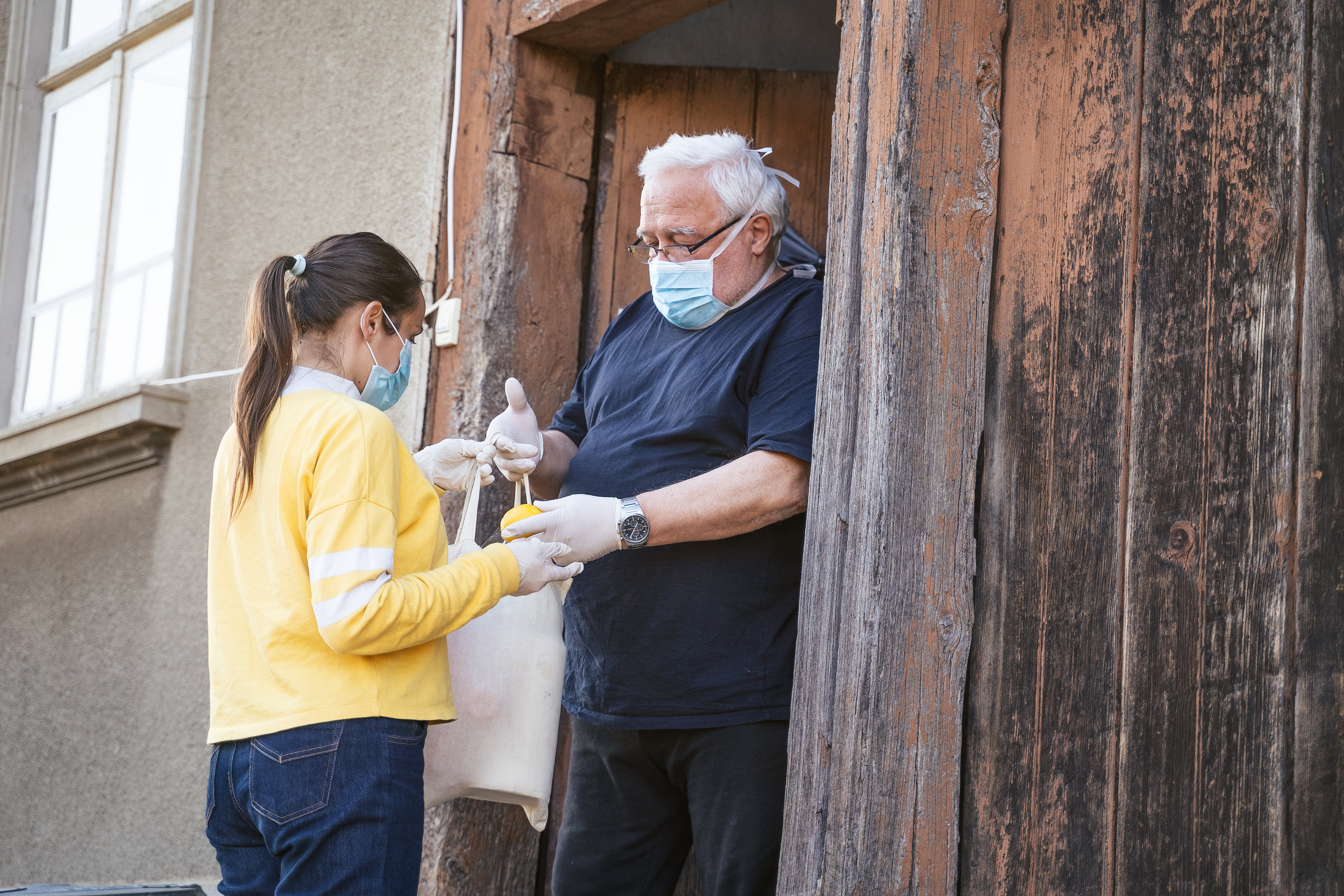AARP Hearing Center
Does Wearing a Face Mask Cause Carbon Dioxide Poisoning?
The most dangerous thing about a mask during the pandemic is not wearing one
by Rachel Nania, AARP, July 15, 2020

En español | It's true that wearing a face mask can be uncomfortable at times: nose gets itchy, sweat collects and glasses fog up. But what's not true is that wearing a mask will give you carbon dioxide poisoning — one of the latest myths making its way around the internet.
"It is not a health risk; it's nowhere close to a risk,” says Travis Glenn, an associate professor of environmental health science and interim director of the Institute of Bioinformatics at the University of Georgia College of Public Health.
For the latest coronavirus news and advice go to AARP.org/coronavirus.
That's because the size of the oxygen molecules you breathe in and the carbon dioxide you breathe out “are substantially smaller than the virus that these masks are designed to trap,” explains Paul Pottinger, M.D., director of the Infectious Diseases and Tropical Medicine Clinic at the University of Washington Medical Center and professor of medicine and allergy and infectious diseases at the University of Washington. “So masks” — whether you make them or buy them — “are certainly safe from a respiratory or gas exchange perspective,” he adds.
And that's the case even if you wear your mask for a prolonged period of time, experts say. Pottinger points to doctors, nurses and other health care providers who wear medical-grade face masks for several hours while doing physically demanding work. It's common for people who work in construction to do the same. “They always wear their mask and none of them have died of carbon dioxide poisoning,” he says.
Face masks are effective
The Centers for Disease Control and Prevention (CDC) recommends the use of a cloth face covering when out in public — even among individuals who otherwise feel healthy — to help slow the spread of the coronavirus, especially from people who are unaware they are infected.
Numerous studies, including one recently conducted by the CDC, show that when worn universally, face masks can significantly reduce the impact of COVID-19 in communities. Some models even suggest face masks can prevent tens of thousands of deaths from the disease. The University of Washington's Institute for Health Metrics and Evaluation, for example, predicts the U.S. will see more than 200,000 deaths from the coronavirus by Nov. 1; those numbers drop to 162,808 if at least 95 percent of people wear masks in public.
"Masks work. And if we're going to get through this, it's going to require that shared experience of wearing a mask,” Pottinger says. Plus, he adds, mask wearing has become a powerful public statement. “It says to everyone who sees you, ‘I care. I care about myself, I care about you.’ And I think that that is so important.”
Few exceptions to mask-wearing guidelines
There are some people who should not wear face masks for medical or safety reasons. Children under the age of 2 are exempt from the guidelines. The CDC also states that masks should not be worn by anyone “who has trouble breathing, is unconscious, incapacitated, or otherwise unable to remove the mask without assistance.”
While those with concerns should talk to their doctor, experts say the phrase “trouble breathing” is for people with chronic lung disease, such as chronic obstructive pulmonary disease (COPD), or those who can't catch their breath at rest or who need oxygen assistance to help them breathe. If you fall into this category, chances are you don't need a mask anyway, since “you shouldn't be leaving your house” and venturing into public places, Glenn says. Individuals with chronic lung disease are among those at high risk for severe illness from a coronavirus infection and are advised to limit public outings as much as possible to avoid exposure to the virus.
"I think for people with chronic lung disease, COVID does not make their life any easier by any means,” Pottinger says. “But it certainly is very important that they talk with their physician about this because not only can we not afford to let them spread the infection to others, we can't allow them to catch the infection either.”
Find a comfortable face covering
If you find that breathing becomes a bit more difficult with a mask on, you're not alone. Breathing is something that most of us do every day, without thought, Pottinger says. “And if there's something that's different in that natural process, it can be very distressing,” he adds. You may even feel like you're not getting enough air on deep inhales, even though you are.
Pottinger's advice: Do a little experimentation. With so many designs, brands and materials out there, take a few different masks for a test drive and find out what's most comfortable.
"I want people to rehearse the practice: Don't just wear it sitting still, but walk around, climb a flight of stairs, see how that feels. Get used to it. Those feelings are not dangerous, they just may be new or uncomfortable. And if it doesn't feel comfortable, try a different mask,” Pottinger says. “To me, the threat of a mask is not about gas exchange; it's about a mask that's uncomfortable, that doesn't fit properly — a mask that people fiddle with using their hands.”
And remember: A comfortable mask can't stop the coronavirus alone. It's still important to keep a distance of at least 6 feet from other people and to wash your hands often to prevent COVID-19. “If we do those things, everything's going to get dramatically better. It won't solve the pandemic, but it will buy us time,” Pottinger says.
More on Masks

































































